At the Mountains of MAMEness: The '70s
I've dabbled with many older arcade games before, either in person or at home. My 2023 goal is to make my way through a majority of the cabs that interest me, at least up through the '80s. So far I've been playing titles both known and obscure, some major and most minor. Below you'll see what I've played (or have experienced through research) in year of release order, plus my thoughts on each game and any relevant info (ex. emulator configuration).
Let's start with the '70s, an era first dominated by electromechanical showpieces from companies like SEGA, Midway, Namco, and Chicago Coin. (I'm skipping over the '60s examples of this genre, but they'll appear on a later list.) The arrival of primordial transistor-to-transistor logic circuit games (TTL for short), typified by Atari's Pong, sparked a new trend in miniaturizing and mass producing the novelty arcade experience. EM games, having largely peaked by this point while held back by production constraints, just couldn't keep up aside from a few notables. Simple, economic video games had reached the bar rooms of North America for the first time, followed by clones in other regions later in the decade.
Soon after the advent of TTL games came fully integrated circuit-driven boards, where all the transistors and logic elements reside and interact in one unit (hence the now commonplace term "board"). Initial production of simple and Very Large Scale ICs was costly, but soon much cheaper and flexible to work with than the unruly daisy chains of chips comprising games as complex as Monaco GP. A few companies held out on transitioning from TTL to IC, especially SEGA, but this was another quick paradigm shift for the arcade game industry. Gone were the days of mere Fascination, miniature flight trainers, and glorified slot-car racers. Raster and vector display games opened so many possible genres, settings, and mechanical innovations that just couldn't be ignored.
Feel free to give me any recommendations for games—even better, articles, retrospectives, useful guides for any games, you name it. I hope these Mountains of MAMEness lists evolve over time as my own arcade gaming canon grows.
| CHANGELOG |
Dec 31 2023: Initial list, from 1971 to 1976.
Feb 2 2023: Added 1977 and 1978.
Feb 3 2023: Added 1979.
Mar 1 2023: Cleaned some review link formatting.
Let's start with the '70s, an era first dominated by electromechanical showpieces from companies like SEGA, Midway, Namco, and Chicago Coin. (I'm skipping over the '60s examples of this genre, but they'll appear on a later list.) The arrival of primordial transistor-to-transistor logic circuit games (TTL for short), typified by Atari's Pong, sparked a new trend in miniaturizing and mass producing the novelty arcade experience. EM games, having largely peaked by this point while held back by production constraints, just couldn't keep up aside from a few notables. Simple, economic video games had reached the bar rooms of North America for the first time, followed by clones in other regions later in the decade.
Soon after the advent of TTL games came fully integrated circuit-driven boards, where all the transistors and logic elements reside and interact in one unit (hence the now commonplace term "board"). Initial production of simple and Very Large Scale ICs was costly, but soon much cheaper and flexible to work with than the unruly daisy chains of chips comprising games as complex as Monaco GP. A few companies held out on transitioning from TTL to IC, especially SEGA, but this was another quick paradigm shift for the arcade game industry. Gone were the days of mere Fascination, miniature flight trainers, and glorified slot-car racers. Raster and vector display games opened so many possible genres, settings, and mechanical innovations that just couldn't be ignored.
Feel free to give me any recommendations for games—even better, articles, retrospectives, useful guides for any games, you name it. I hope these Mountains of MAMEness lists evolve over time as my own arcade gaming canon grows.
| CHANGELOG |
Dec 31 2023: Initial list, from 1971 to 1976.
Feb 2 2023: Added 1977 and 1978.
Feb 3 2023: Added 1979.
Mar 1 2023: Cleaned some review link formatting.
82 Games
【It is the year 1971】
1971, Bill Pitts & Hugh Tuck, tested at Stanford University until 1979
There's a very complex history behind this arcade conversion of the classic Spacewar, which also involves Nutting & Syzygy's Computer Space from the same period. Today it's more or less a missing link between the codeheads' pastime that was the minicomputer game (ex. Sumerian Game) and what a vast majority of '70s gamers knew. Not the worst thing you could play with a friend, but no different from the typical Spacewar clone you could play on a timeshared terminal back then either.
1971, Bill Pitts & Hugh Tuck, tested at Stanford University until 1979
There's a very complex history behind this arcade conversion of the classic Spacewar, which also involves Nutting & Syzygy's Computer Space from the same period. Today it's more or less a missing link between the codeheads' pastime that was the minicomputer game (ex. Sumerian Game) and what a vast majority of '70s gamers knew. Not the worst thing you could play with a friend, but no different from the typical Spacewar clone you could play on a timeshared terminal back then either.
1971, Syzygy
As explained above, this was Bushnell's own clone of Spacewar!, housed in a fancier cabinet but with similarly complex controls. Though fairly profitable, it didn't reach the level of success he desired.
As explained above, this was Bushnell's own clone of Spacewar!, housed in a fancier cabinet but with similarly complex controls. Though fairly profitable, it didn't reach the level of success he desired.
【It is the year 1972】
1972, Atari
I mean, it's Pong. You also had the Odyssey launching just before, and even older interactive "table tennis" demonstrations. But here was a reproduceable, multi-cabinet raster video game you could stick just about anywhere. The game that introduced video games to a significant portion of U.S. arcade-goers needs little elaboration here. I can and will always recommend properly researched writing and histories on this, Computer Space, and Galaxy Game.
1972, Atari
I mean, it's Pong. You also had the Odyssey launching just before, and even older interactive "table tennis" demonstrations. But here was a reproduceable, multi-cabinet raster video game you could stick just about anywhere. The game that introduced video games to a significant portion of U.S. arcade-goers needs little elaboration here. I can and will always recommend properly researched writing and histories on this, Computer Space, and Galaxy Game.
1972, For-Play
Another variation on Spacewar!, unofficially using the TV show's name. This has nothing to do with Mike Mayfield's Star Trek BASIC game.
Another variation on Spacewar!, unofficially using the TV show's name. This has nothing to do with Mike Mayfield's Star Trek BASIC game.
【It is the year 1973】
1973, Midway
The first arcade racing video game, predating Atari's own clone from the same year. Having already commissioned this game from Midway before canceling its release, Atari would end up making...
1973, Midway
The first arcade racing video game, predating Atari's own clone from the same year. Having already commissioned this game from Midway before canceling its release, Atari would end up making...
1973, Atari
...the 2nd arcade racing video game. Both this & Asteroid focus on dodging objects by moving back and forth, a clever early iteration on paddle controls. Frogger owes much to them.
...the 2nd arcade racing video game. Both this & Asteroid focus on dodging objects by moving back and forth, a clever early iteration on paddle controls. Frogger owes much to them.
1973, Atari
You get two paddles now. Yay!
You get two paddles now. Yay!
1973, Atari
The arcade counterpoint to Hunt the Wumpus on minicomputers and mainframes. I still can't get over how ridiculous the boob sticks are. It's an alright basic-as-can-be maze tag thing.
The arcade counterpoint to Hunt the Wumpus on minicomputers and mainframes. I still can't get over how ridiculous the boob sticks are. It's an alright basic-as-can-be maze tag thing.
1973, Taito
It's their first video game, a basic Pong clone. Humble beginnings.
It's their first video game, a basic Pong clone. Humble beginnings.
1973, SEGA
Another first video game from a major arcade firm, and a Pong clone too.
Another first video game from a major arcade firm, and a Pong clone too.
1973, Taito
Notable mainly for being the first domestically designed and produced Japanese arcade video game. Tomohiko Nishikado put his own spin on this, making it the first soccer-themed video game. His creativity under constraints would eventually lead to Space Invader's triumph.
Notable mainly for being the first domestically designed and produced Japanese arcade video game. Tomohiko Nishikado put his own spin on this, making it the first soccer-themed video game. His creativity under constraints would eventually lead to Space Invader's triumph.
【It is the year 1974】
1974, Ramtek, check out my review!
One of a couple signature early games from the upstart company. This started the block breaking genre and majorly influenced Breakout a year and a half later. It's a fun romp even now, a good excuse to download the DICE emulator.
1974, Ramtek, check out my review!
One of a couple signature early games from the upstart company. This started the block breaking genre and majorly influenced Breakout a year and a half later. It's a fun romp even now, a good excuse to download the DICE emulator.
1974, Ramtek
Their other notable TTL game, Baseball was one of the first video games to depict recognizable human characters. It offered a very simple but effective take on the titular sport, with pitching, batting, catching, base running, and homeruns all present. This relatively complex simulation, comparable even to the best electromechanical installations, played its part in shaping future sports games.
Their other notable TTL game, Baseball was one of the first video games to depict recognizable human characters. It offered a very simple but effective take on the titular sport, with pitching, batting, catching, base running, and homeruns all present. This relatively complex simulation, comparable even to the best electromechanical installations, played its part in shaping future sports games.
1974, Atari
A soccer-themed ball and paddle game, this was the debut of their cocktail cabinet, soon a mainstay in arcades around the world.
A soccer-themed ball and paddle game, this was the debut of their cocktail cabinet, soon a mainstay in arcades around the world.
1974, Atari
Some time after Ralph Baer's own take on Simon Says for Odyssey came this arcade variant.
Some time after Ralph Baer's own take on Simon Says for Odyssey came this arcade variant.
1974, Atari
Moving to non-racing sports, this was the earliest noteworthy basketball-themed video game, fitting the ball-and-paddle genre into a new niche.
Moving to non-racing sports, this was the earliest noteworthy basketball-themed video game, fitting the ball-and-paddle genre into a new niche.
1974, Atari
Having started with space racing, Atari then made the first arcade time attack racer, introducing sim mechanics like a shifter and braking. This single-screen game was less commercially successful than hoped, but still got a sequel the same year (Gran Trak 20). It was the first arcade video game (followed soon by Tank) to use mask ROM, allowing for more detailed sprites and graphics than Pong's diode arrays.
Having started with space racing, Atari then made the first arcade time attack racer, introducing sim mechanics like a shifter and braking. This single-screen game was less commercially successful than hoped, but still got a sequel the same year (Gran Trak 20). It was the first arcade video game (followed soon by Tank) to use mask ROM, allowing for more detailed sprites and graphics than Pong's diode arrays.
1974, SEGA
The first of many TTL board lightgun games to come, SEGA began their transition away from electromechanical shooting galleries with this release.
The first of many TTL board lightgun games to come, SEGA began their transition away from electromechanical shooting galleries with this release.
1974, Taito
While Gran Trak 10 had single-screen driving on lock, Taito's game was the first fully vertically scrolling arcade video game in general. Its mix of acceleration and dodging racecars would influence many successors.
While Gran Trak 10 had single-screen driving on lock, Taito's game was the first fully vertically scrolling arcade video game in general. Its mix of acceleration and dodging racecars would influence many successors.
1974, Nintendo
The Big N enters the Mountains of MAMEness with their influential lightgun game, combining electronic mechanics with projected film scenes of your Wild West targets. Remains and documentation of this game are rare, but highly coveted.
The Big N enters the Mountains of MAMEness with their influential lightgun game, combining electronic mechanics with projected film scenes of your Wild West targets. Remains and documentation of this game are rare, but highly coveted.
1974, Atari
Here's the first notable fusion of pong and pinball, utilizing a simple set of obstacles and digital plunger. The rough but recognizable pinball-style gravity physics keep you on your toes.
Here's the first notable fusion of pong and pinball, utilizing a simple set of obstacles and digital plunger. The rough but recognizable pinball-style gravity physics keep you on your toes.
1974, Atari
A decade before Nintendo's own famous duck hunting lightgun shooter, this was the earliest electronic + overlay example of note.
A decade before Nintendo's own famous duck hunting lightgun shooter, this was the earliest electronic + overlay example of note.
1974, Tank, check out my review!
Later brought to the Atari VCS as Combat (alongside some other arcade releases in this list), Tank was an early Kee Games creation translating the basics of Spacewar-type games to a ground vehicle format. This was a multiplayer hit during a brief but acute crash in the Pong clone market.
Later brought to the Atari VCS as Combat (alongside some other arcade releases in this list), Tank was an early Kee Games creation translating the basics of Spacewar-type games to a ground vehicle format. This was a multiplayer hit during a brief but acute crash in the Pong clone market.
【It is the year 1975】
1975, Atari
Their first fully colorized video game improved on Gran Trak 20's multiplayer features, adding more player slots and a new course to learn.
1975, Atari
Their first fully colorized video game improved on Gran Trak 20's multiplayer features, adding more player slots and a new course to learn.
1975, Atari
This mediocre vertical driving game was nonetheless the manufacturer's first go at the genre.
This mediocre vertical driving game was nonetheless the manufacturer's first go at the genre.
1975, Atari
Later expanded on VCS/2600 as Air Sea Battle, this was a simple but breezy target shooting game.
Later expanded on VCS/2600 as Air Sea Battle, this was a simple but breezy target shooting game.
1975, Taito
A leap forward in versus combat, this early work by Taito icon Tomohiro Nishikado pit one cowboy against the other with multi-directional shooting. He sought to recreate SEGA's own electromechanical game Gun Fight from 1969. This was perhaps a simple way to iterate on ball-and-paddle gameplay, but the more unique theme and traversable desert arena helped it stand out. Ricochet physics also emphasized the gun combat, another first in a video game. Furthermore, Midway's licensed version Gun Fight was the first microprocessor-based video game. This would in turn inspire Nishikado to make his own digital video game, which became Space Invaders.
A leap forward in versus combat, this early work by Taito icon Tomohiro Nishikado pit one cowboy against the other with multi-directional shooting. He sought to recreate SEGA's own electromechanical game Gun Fight from 1969. This was perhaps a simple way to iterate on ball-and-paddle gameplay, but the more unique theme and traversable desert arena helped it stand out. Ricochet physics also emphasized the gun combat, another first in a video game. Furthermore, Midway's licensed version Gun Fight was the first microprocessor-based video game. This would in turn inspire Nishikado to make his own digital video game, which became Space Invaders.
1975, Shark Jaws
Arguably the first game intended to use a popular license (Bushnell unsuccessfully tried to use the recent hit film Jaws), this basic grab-and-dodge game has some interesting history behind its development.
Arguably the first game intended to use a popular license (Bushnell unsuccessfully tried to use the recent hit film Jaws), this basic grab-and-dodge game has some interesting history behind its development.
1975, Atari
Horse derby video games would one day find a sizable niche in arcades. Until then, here's the very first of them, a proto-platformer where you hop hurdles to gain speed and reach the goal before your competitors. Its VCS port would add some play variations.
Horse derby video games would one day find a sizable niche in arcades. Until then, here's the very first of them, a proto-platformer where you hop hurdles to gain speed and reach the goal before your competitors. Its VCS port would add some play variations.
1976, Reiner Foerst & co.
After experimenting with overlays and lightbulb set-ups, the German doctor decided he'd make his racecar driving simulator as a TTL game instead. This Spring '86 release took the amusement industry by surprise, soon inspiring others to clone its dark-driving premise and control scheme (ex. Night Driver). Foerst would make a few more Nurburgring racers based on this, plus sims for other vehicles.
After experimenting with overlays and lightbulb set-ups, the German doctor decided he'd make his racecar driving simulator as a TTL game instead. This Spring '86 release took the amusement industry by surprise, soon inspiring others to clone its dark-driving premise and control scheme (ex. Night Driver). Foerst would make a few more Nurburgring racers based on this, plus sims for other vehicles.
1975, Atari
Returning to the heavens, this simpler adaptation of Spacewar (and their earlier Tank) introduces tactical use of a wraparound play area, later used to great effect in titles like Asteroids.
Returning to the heavens, this simpler adaptation of Spacewar (and their earlier Tank) introduces tactical use of a wraparound play area, later used to great effect in titles like Asteroids.
1975, Atari
This iteration on both Gotcha and the Gran Trak series has you driving around a single-screen maze to reach score flags in sequence.
This iteration on both Gotcha and the Gran Trak series has you driving around a single-screen maze to reach score flags in sequence.
【It is the year 1976】
1976, Gremlin / SEGA, check out my review!
Every snake and Tron light-cycles game originates from this maze duel game where you lay walls in an endless line to trap your opponent. 1976 would see a few Blockade clones, such as Atari's Dominoes, Meadows' Bigfoot Bonkers, and Ramtek's Barricade.
1976, Gremlin / SEGA, check out my review!
Every snake and Tron light-cycles game originates from this maze duel game where you lay walls in an endless line to trap your opponent. 1976 would see a few Blockade clones, such as Atari's Dominoes, Meadows' Bigfoot Bonkers, and Ramtek's Barricade.
1976, Exidy
As a precursor to their much-better known '76 car game, this driving action board expands on Crash 'N' Score.
As a precursor to their much-better known '76 car game, this driving action board expands on Crash 'N' Score.
1976, SEGA
A decade before the better-known remake, this proto-taikan boxing game introduced players to a unique non-joystick, non-dial/-paddle control system mimicking the sport. It's also the first graphical boxing video game.
A decade before the better-known remake, this proto-taikan boxing game introduced players to a unique non-joystick, non-dial/-paddle control system mimicking the sport. It's also the first graphical boxing video game.
1976, Atari
The firm no doubt had Gun Fight on their minds when releasing this modern-day, crime-themed clone where you must manage your car's automatic movement and firing angle.
The firm no doubt had Gun Fight on their minds when releasing this modern-day, crime-themed clone where you must manage your car's automatic movement and firing angle.
1976, Midway
Though very simple, this pure maze escape game would set a visual template for future titles in the genre.
Though very simple, this pure maze escape game would set a visual template for future titles in the genre.
1976, SEGA
One of the first known officially licensed video games, you play the eponymous character from Happy Days riding a bike across town and dodging obstacles.
One of the first known officially licensed video games, you play the eponymous character from Happy Days riding a bike across town and dodging obstacles.
1976, Midway
One of the earliest air-to-sea shooting video games, you commandeer a cruiser and shoot down combat planes.
One of the earliest air-to-sea shooting video games, you commandeer a cruiser and shoot down combat planes.
1976, Exidy
Their own competitor to Midway's Sea Wolf is available to play today via the DICE emulator.
Their own competitor to Midway's Sea Wolf is available to play today via the DICE emulator.
1976, Atari
Trivia games were occasionally made in the electromechanical sphere, but this was the first arcade video game to adapt the genre. It also introduced the first standard text font that other arcade video boards would use.
Trivia games were occasionally made in the electromechanical sphere, but this was the first arcade video game to adapt the genre. It also introduced the first standard text font that other arcade video boards would use.
1976, Atari, based heavily on Nürburgring 1 by Reiner Foerst
Dave Sheppard and co.'s defining 1st-person arcade driving simulator was not the first of its kind. He was inspired during development by magazine pictures of an earlier game that year [which isn't on IMDB, yet], the aforementioned licensed racer by Foerst. Night Driver still matters as players' introduction to fast, "realistic" driving which many raster and vector games would iterate upon.
Dave Sheppard and co.'s defining 1st-person arcade driving simulator was not the first of its kind. He was inspired during development by magazine pictures of an earlier game that year [which isn't on IMDB, yet], the aforementioned licensed racer by Foerst. Night Driver still matters as players' introduction to fast, "realistic" driving which many raster and vector games would iterate upon.
1976, Midway
The most notable Night Driver clone was this Datsun-sponsored, slightly more polished game from Atari's closest rival. Zzzap's main creator, Jamie Fenton, became a key creator at Midway, and is an icon among transgender game developers today.
The most notable Night Driver clone was this Datsun-sponsored, slightly more polished game from Atari's closest rival. Zzzap's main creator, Jamie Fenton, became a key creator at Midway, and is an icon among transgender game developers today.
1976, Atari
Right next to their first driving simulator came a sort of spacefighter sim, also a distant ancestor of first-person shooters. This simple space shooter had impressive visuals which led to the first generation of vector display games with similar premises.
Right next to their first driving simulator came a sort of spacefighter sim, also a distant ancestor of first-person shooters. This simple space shooter had impressive visuals which led to the first generation of vector display games with similar premises.
1976, Atari (Steve Wozniak & Steve Jobs)
WIth its updated, more refined take on Clean Sweep's virtual squash play loop, Breakout was maybe the biggest hit of '76. Clones would crop up in coming years, and the game's success was a boon for Woz & Jobs prior to launching their Apple II micro-computer.
WIth its updated, more refined take on Clean Sweep's virtual squash play loop, Breakout was maybe the biggest hit of '76. Clones would crop up in coming years, and the game's success was a boon for Woz & Jobs prior to launching their Apple II micro-computer.
1976, Exidy
No game was as controversial (not even the salacious Gotcha!) up to this point as Death Race. Its simple but compelling "run over the gremlins!" premise and marketing caused much furor at the time, making it a surprise hit for the company.
No game was as controversial (not even the salacious Gotcha!) up to this point as Death Race. Its simple but compelling "run over the gremlins!" premise and marketing caused much furor at the time, making it a surprise hit for the company.
【It is the year 1977】
1977, Atari
Unlike the VS-only Blockade, this clone introduced a CPU opponent.
1977, Atari
Unlike the VS-only Blockade, this clone introduced a CPU opponent.
1977, Exidy
Think of it as the other Gotcha, where you must tag women to earn their affection. (Very not objectifying! /s) It's more or less an iteration on Exidy's previous maze games.
Think of it as the other Gotcha, where you must tag women to earn their affection. (Very not objectifying! /s) It's more or less an iteration on Exidy's previous maze games.
1977, Atari
At a time when single arcade cabinets only serviced one game, Atari decided to combine three of them into a PCB. This would lead to a tradition of multi-game cabinets beyond just toggling variations.
At a time when single arcade cabinets only serviced one game, Atari decided to combine three of them into a PCB. This would lead to a tradition of multi-game cabinets beyond just toggling variations.
1977, Midway/Nutting
Similar to their own Road Runner, this was one of Midway & Nutting's earliest digital lightgun games, where you control an on-screen reticule via the gun peripheral.
Similar to their own Road Runner, this was one of Midway & Nutting's earliest digital lightgun games, where you control an on-screen reticule via the gun peripheral.
1977, Atari
A simple zero-to-60 racer, this would later have an unlicensed clone in Activision's Dragster for Atari VCS. As such, it's one of the earliest arcade video games to have that distinction.
A simple zero-to-60 racer, this would later have an unlicensed clone in Activision's Dragster for Atari VCS. As such, it's one of the earliest arcade video games to have that distinction.
1977, Meadows
Though very clearly based on the Breakout template, this was the earliest notable bowling-themed video game in circulation.
Though very clearly based on the Breakout template, this was the earliest notable bowling-themed video game in circulation.
1977, Gremlin
Following up on their snake game invention with Blockade, the later Hustle resembles today's clones much more closely. You gobble up dots on screen, increasing your vehicle's tail as you go, until crashing into yourself.
Following up on their snake game invention with Blockade, the later Hustle resembles today's clones much more closely. You gobble up dots on screen, increasing your vehicle's tail as you go, until crashing into yourself.
1977, Gremlin / Taito
Akin to Desert Gun yet different, this was one of, if not the earliest score-centric run 'n' gun video games, where you walk around a hunting ground shooting down game.
Akin to Desert Gun yet different, this was one of, if not the earliest score-centric run 'n' gun video games, where you walk around a hunting ground shooting down game.
1977, Gremlin
Yet again, the studio snags a first: the original sub-naval shooter for arcades. Atari followed up not long after with Destroyer, and many other games would iterate on this.
Yet again, the studio snags a first: the original sub-naval shooter for arcades. Atari followed up not long after with Destroyer, and many other games would iterate on this.
1977, Atari
Though Taito had already pioneered the vertical scolling arcade racer in Japan, Atari's game would popularize the concept for a North American audience by refining their earlier Hi-Way into Super Bug.
Though Taito had already pioneered the vertical scolling arcade racer in Japan, Atari's game would popularize the concept for a North American audience by refining their earlier Hi-Way into Super Bug.
1977, Atari
Just as Meadows was first to style a block game after bowling, so would the top firm with their first take on pool.
Just as Meadows was first to style a block game after bowling, so would the top firm with their first take on pool.
1977, Atari
Allowing up to 8 players in the same race, this was the culmination of Atari's early iterations on their Gran Trak series.
Allowing up to 8 players in the same race, this was the culmination of Atari's early iterations on their Gran Trak series.
1977, Atari
Rather sea to air, this single-button shooter has you dropping your payload from air to ground. This was maybe the first major arcade release to feature a lives system, fashioned as shots remaining before the game would end. It's possible for the AI or human opponent to lose first, leaving the other player alone to keep bombing until there's nothing left.
Rather sea to air, this single-button shooter has you dropping your payload from air to ground. This was maybe the first major arcade release to feature a lives system, fashioned as shots remaining before the game would end. It's possible for the AI or human opponent to lose first, leaving the other player alone to keep bombing until there's nothing left.
1977, Cinematronic
It may be a regular 'ol Spacewar! variation, but Larry Rosenthal's first ever vector game (shown at the Amusement and Music Operators of America expo in October) introduced the display technology to video games. We'll be seeing plenty more vector games from not just Cinematronic, but Rosenthal's own Vectorbeam and then companies like Atari & SEGA.
It may be a regular 'ol Spacewar! variation, but Larry Rosenthal's first ever vector game (shown at the Amusement and Music Operators of America expo in October) introduced the display technology to video games. We'll be seeing plenty more vector games from not just Cinematronic, but Rosenthal's own Vectorbeam and then companies like Atari & SEGA.
【It is the year 1978; the clowns arrive】
1978, Atari
Using a new version of Hi-Way's vertical scanline scrolling tech, this air-to-ground shooter utilizes a then unique curving world perspective.
Using a new version of Hi-Way's vertical scanline scrolling tech, this air-to-ground shooter utilizes a then unique curving world perspective.
1978, Atari
Seeing the success of Mattel Electronics's handheld LCD American football game from the year before, Atari made the first arcade football video game with a cocktail-style cab. Coleco would also release Electronic Quarterback this year, another LCD handheld, kickstarting a tradition of accessible digital football titles.
Seeing the success of Mattel Electronics's handheld LCD American football game from the year before, Atari made the first arcade football video game with a cocktail-style cab. Coleco would also release Electronic Quarterback this year, another LCD handheld, kickstarting a tradition of accessible digital football titles.
1978, Gremlin / SEGA
Considered a precursor to the classic platformer, this score-attack game has you hopping up and across a lily pond to snag insectoid prey.
Considered a precursor to the classic platformer, this score-attack game has you hopping up and across a lily pond to snag insectoid prey.
1978, Atari
This variation on Canyon Bomber shifts the premise away from artillery to parachuting. It later got ported to the Atari VCS with some variations.
This variation on Canyon Bomber shifts the premise away from artillery to parachuting. It later got ported to the Atari VCS with some variations.
1978, Namco, check out my review!
After years of achieving feats in the electromechanical arcade industry, Nakamura Seisakusho Co. finally made their first video game. A team led by Toru Iwatani, later of Pac-Man renown, made this Breakout-meets-pinball board during the midst of block-breaking fever in Japan. Its colors and memorable sound design set a standard for later Namco games to beat.
After years of achieving feats in the electromechanical arcade industry, Nakamura Seisakusho Co. finally made their first video game. A team led by Toru Iwatani, later of Pac-Man renown, made this Breakout-meets-pinball board during the midst of block-breaking fever in Japan. Its colors and memorable sound design set a standard for later Namco games to beat.
1978, Atari
The US juggernaut's own take on digital pinball released around the same time as Gee Bee. It would find a second life as an Atari VCS staple.
The US juggernaut's own take on digital pinball released around the same time as Gee Bee. It would find a second life as an Atari VCS staple.
1978, Atari
Though a rather loud and simplistic game to play today, Fire Truck introduced the first sit-down video game cabinet modeled to resemble the vehicle you drive in-game. One player steers the fire engine while another mans the fire hose. This makes it the first co-op play arcade video game to date.
Though a rather loud and simplistic game to play today, Fire Truck introduced the first sit-down video game cabinet modeled to resemble the vehicle you drive in-game. One player steers the fire engine while another mans the fire hose. This makes it the first co-op play arcade video game to date.
1978, Atari
Seeing the success of arcade ports to the Atari VCS which featured multiple new game modes, the company made this Breakout sequel with multiple modes in mind.
Seeing the success of arcade ports to the Atari VCS which featured multiple new game modes, the company made this Breakout sequel with multiple modes in mind.
1978, Taito, check out my review!
Here it is, the big one. Tomohiko Nishikado's seminal shoot-em-up, and Taito's first microprocessor game, wasn't an immediate success. It quickly gained word-of-mouth praise, however, and soon dominated arcades the world 'round. On top of being a notable auteur creation, this introduced the first proper lives system in video games, as well as the first popular scoring strategies (the "Nagoya shot" for one). With differentiated enemy types, a memorable sonic rhythm, and the first high-score table in a video game, Space Invaders was to the late-'70s what Pong was earlier in the decade.
Here it is, the big one. Tomohiko Nishikado's seminal shoot-em-up, and Taito's first microprocessor game, wasn't an immediate success. It quickly gained word-of-mouth praise, however, and soon dominated arcades the world 'round. On top of being a notable auteur creation, this introduced the first proper lives system in video games, as well as the first popular scoring strategies (the "Nagoya shot" for one). With differentiated enemy types, a memorable sonic rhythm, and the first high-score table in a video game, Space Invaders was to the late-'70s what Pong was earlier in the decade.
【It is the year 1979】
1979, SEGA/Gremlin
Three years after inventing snake, this intrepid firm ended up inventing the collect-a-thon maze game. We're only a year off from Pac-Man, but Head On's imitators came in quick succession. The simple but effective premise of running over dots and risking a run-in with the other driver remains fun.
1979, SEGA/Gremlin
Three years after inventing snake, this intrepid firm ended up inventing the collect-a-thon maze game. We're only a year off from Pac-Man, but Head On's imitators came in quick succession. The simple but effective premise of running over dots and risking a run-in with the other driver remains fun.
1979, Vectorbeam
Continuing to flex the power of vector video technology, this first-person driver takes you through a twist road with other cars, cacti, and invisible walls waiting to wreck you.
Continuing to flex the power of vector video technology, this first-person driver takes you through a twist road with other cars, cacti, and invisible walls waiting to wreck you.
1979, Taito
The big sequel to 1978's biggest game seems unassuming at first. Its claim to fame isn't anything mechanical, but the first widely-recognized intermission or cutscene in an arcade video game.
The big sequel to 1978's biggest game seems unassuming at first. Its claim to fame isn't anything mechanical, but the first widely-recognized intermission or cutscene in an arcade video game.
1979, Namco
This iteration upon Gee Bee's paddle-and-pinball hybrid doesn't innovate so much as it fixes the previous game's flaws. A surprise favorite of mine.
This iteration upon Gee Bee's paddle-and-pinball hybrid doesn't innovate so much as it fixes the previous game's flaws. A surprise favorite of mine.
1979, Atari
What's Spacewar without a human rival? A mass of debris heading every which way! Rather than simply copy the Invaders formula as their competitors did, Atari reworked the aging Spacewar! into a new kind of tricky shooter, one where manipulating inertia and gravity counts most.
What's Spacewar without a human rival? A mass of debris heading every which way! Rather than simply copy the Invaders formula as their competitors did, Atari reworked the aging Spacewar! into a new kind of tricky shooter, one where manipulating inertia and gravity counts most.
1979, Nintendo, check out my review!
Well before Donkey Kong, this was perhaps the toy company's best arcade shooter, a clever challenger to other Invaders clones. 8-way dual stick controls and combat within an arena separates this from the pack, alongside very early art from Shigeru Miyamoto.
Well before Donkey Kong, this was perhaps the toy company's best arcade shooter, a clever challenger to other Invaders clones. 8-way dual stick controls and combat within an arena separates this from the pack, alongside very early art from Shigeru Miyamoto.
1979, Namco
Of all the challengers to Space Invaders' throne, this colorful, sonically sumptuous space shooter became most prominent. It's hard to play it now if you're already used to Galaga's improvements, but I think Galaxian's still a ton of fun. Its copious appearances in later compilations, and even loading screens (ex. Ridge Racer), demonstrate the nostalgia it's earned.
Of all the challengers to Space Invaders' throne, this colorful, sonically sumptuous space shooter became most prominent. It's hard to play it now if you're already used to Galaga's improvements, but I think Galaxian's still a ton of fun. Its copious appearances in later compilations, and even loading screens (ex. Ridge Racer), demonstrate the nostalgia it's earned.
1979, SNK
Maybe it's just a typical Invaders-like, the kind you'd see this year and the next. But as SNK's first video game, it's not half bad of a start for a company that would one day rule arcades the world 'round.
Maybe it's just a typical Invaders-like, the kind you'd see this year and the next. But as SNK's first video game, it's not half bad of a start for a company that would one day rule arcades the world 'round.
1979, SEGA, check out my review!
Like others, the corporation once known for electromechanical games had moved on to digital, leaving TTL boards behind for CPU ones. Yet their last discrete logic product, this vertical racer with tons of speed and hazards, became a grand success. Monaco GP was SEGA's best game of the decade, as exciting and challenging a race against the odds as you'd ask for. It got ported to the SG-1000 not long after, and its spirit lives on in Super Monaco GP and the SEGA Ages PS2 remake.
Like others, the corporation once known for electromechanical games had moved on to digital, leaving TTL boards behind for CPU ones. Yet their last discrete logic product, this vertical racer with tons of speed and hazards, became a grand success. Monaco GP was SEGA's best game of the decade, as exciting and challenging a race against the odds as you'd ask for. It got ported to the SG-1000 not long after, and its spirit lives on in Super Monaco GP and the SEGA Ages PS2 remake.
1979, Namco
Iwatani's team trades out the polish of Bomb Bee for a more character-centric sequel to Gee Bee. Its more maze-like board design and super-deformed ghosts laid the groundwork for a certain pizza-shaped hero's game next year.
Iwatani's team trades out the polish of Bomb Bee for a more character-centric sequel to Gee Bee. Its more maze-like board design and super-deformed ghosts laid the groundwork for a certain pizza-shaped hero's game next year.
1979, Denki Onkyō, based on the PC game by University of Tokyo's Theoretical Science Group
The original maze trap-em-up may not look that enticing nowadays, but it was considered a big leap in design from Space Invaders during its launch period. It's both the earliest significant Japanese-made computer game and an important player in the arcade space. Games like Space Panic, Pac-Man, and Dig Dug owe so much to it that I'm irritated it's still so obscure out here in the Anglosphere. Actually playing the arcade release is a bit tricky at first, but well worth a try.
The original maze trap-em-up may not look that enticing nowadays, but it was considered a big leap in design from Space Invaders during its launch period. It's both the earliest significant Japanese-made computer game and an important player in the arcade space. Games like Space Panic, Pac-Man, and Dig Dug owe so much to it that I'm irritated it's still so obscure out here in the Anglosphere. Actually playing the arcade release is a bit tricky at first, but well worth a try.
1979, Atari
I deem it fitting to end this big overview of '70s arcade gaming on the Big A's tribute to a then 10-year old staple of computer gaming. Their take on Lunar Lander (and Moonlander from '73) is a bit simpler, but still as quietly engaging and impressive. Managing moon physics and trying to land safely in a tough, out-of-reach spot always gets me going. With new vector graphics, the classic Eagle-has-landed experience had reached a new level.
I deem it fitting to end this big overview of '70s arcade gaming on the Big A's tribute to a then 10-year old staple of computer gaming. Their take on Lunar Lander (and Moonlander from '73) is a bit simpler, but still as quietly engaging and impressive. Managing moon physics and trying to land safely in a tough, out-of-reach spot always gets me going. With new vector graphics, the classic Eagle-has-landed experience had reached a new level.
4 Comments
Yep, it's mostly emulated on MAME. No sound, but everything else works. More than I can say for some of the unplayable TTL games.
I see what you did with the title there, and I love(craft) it.
Given how many games I’ll be listing and doing blurbs for, it’s certainly an eldritch ordeal.
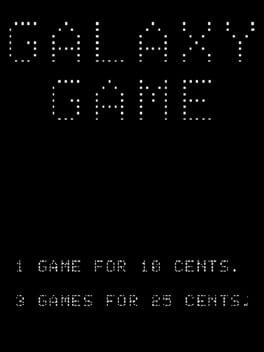

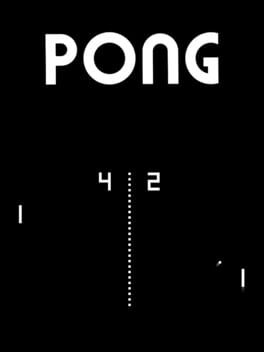
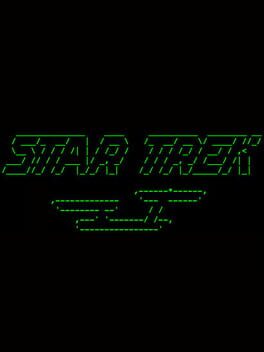
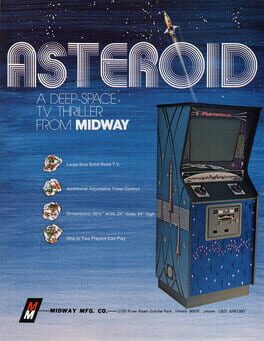
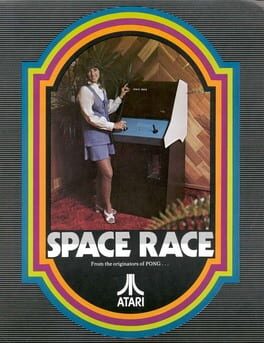
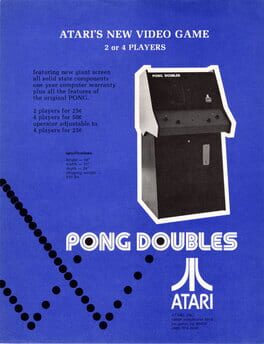
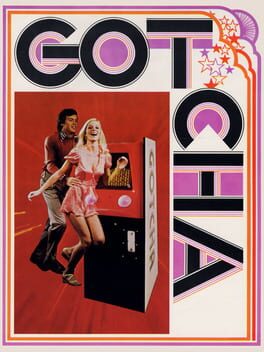

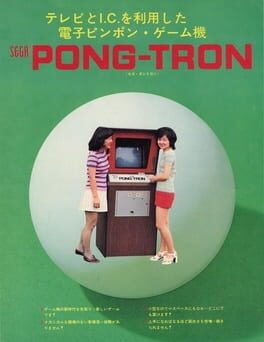
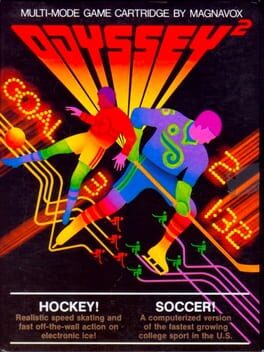
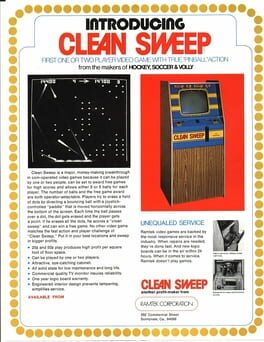
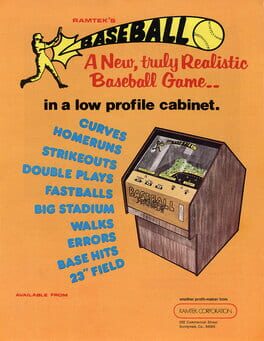
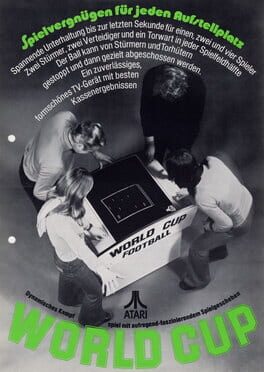
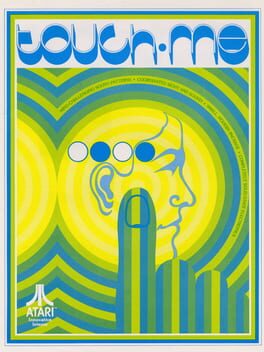
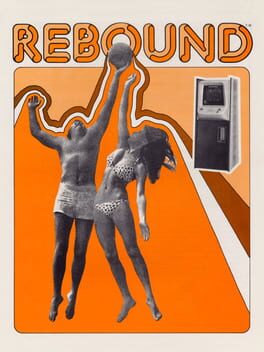
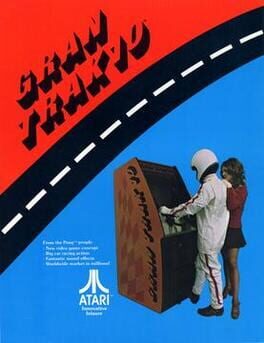
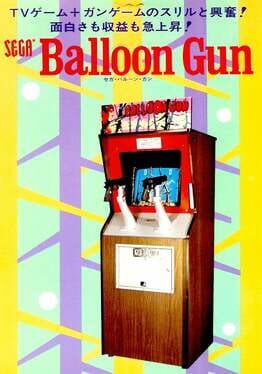
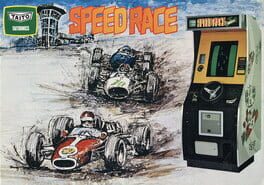
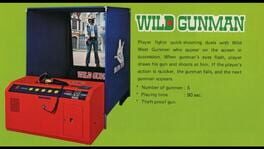
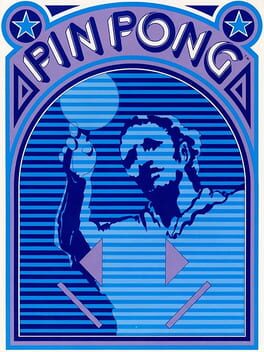
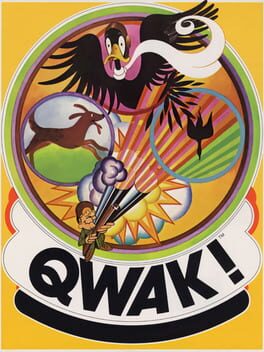
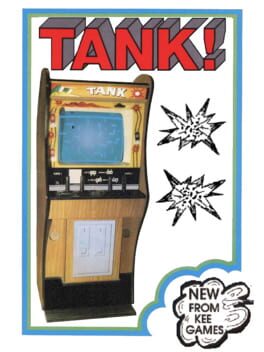
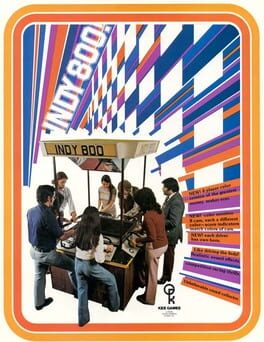
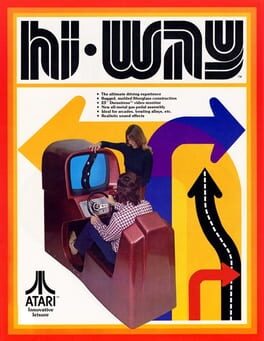
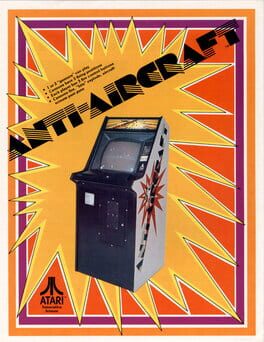
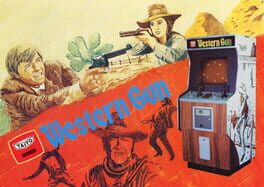
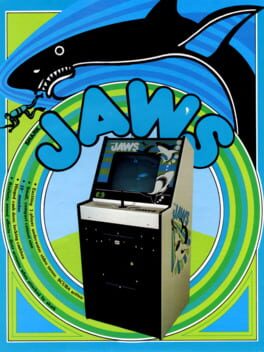
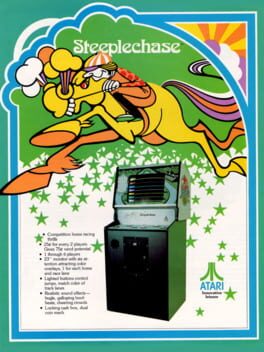

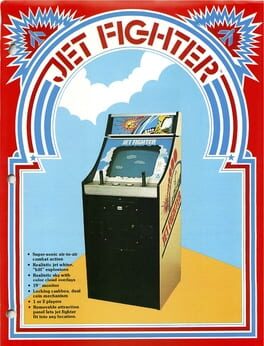

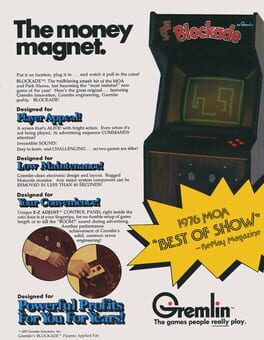
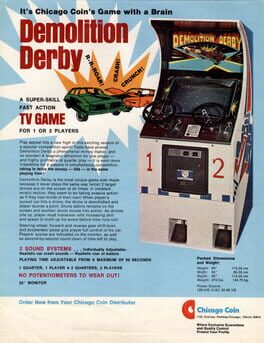
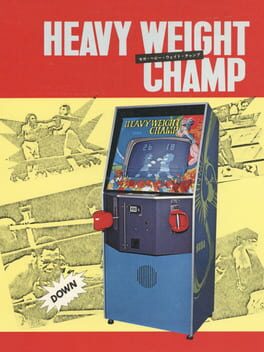

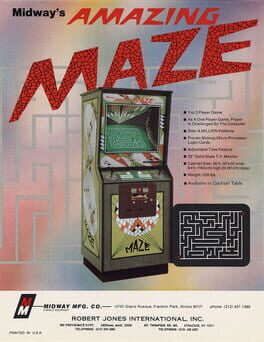
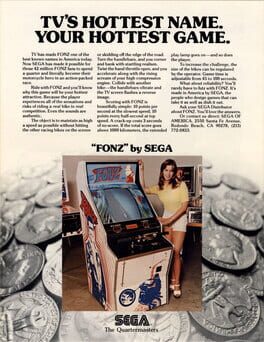
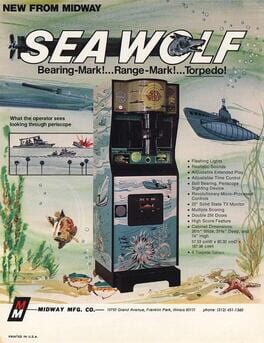

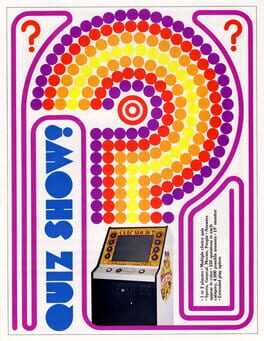
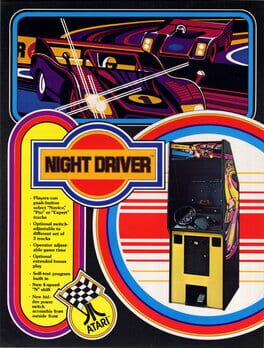
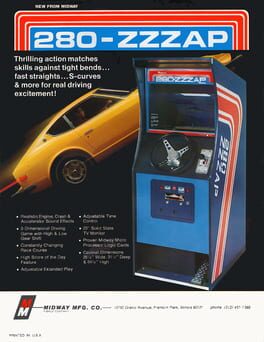

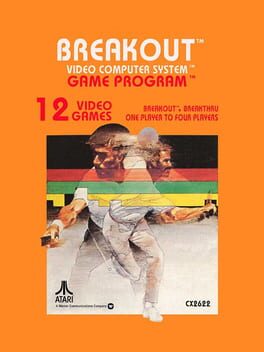

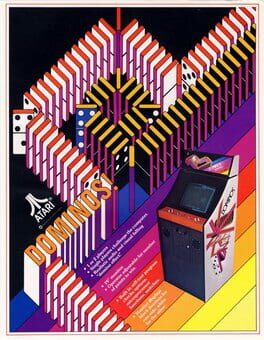
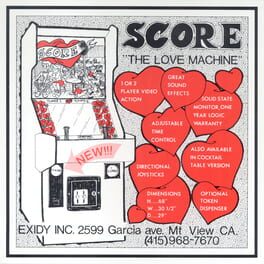
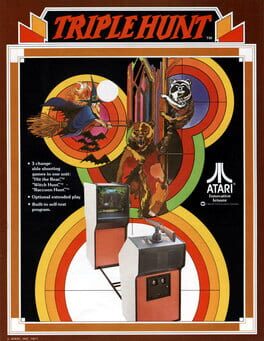
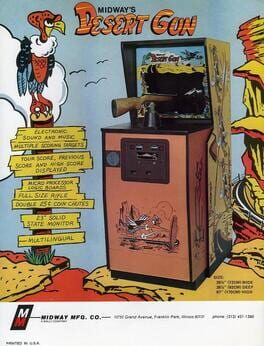
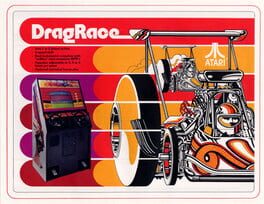
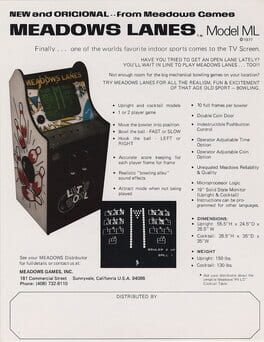
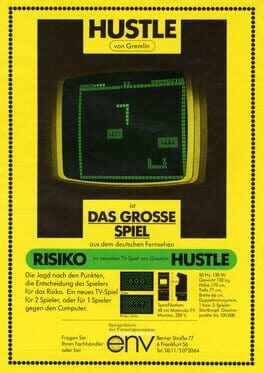
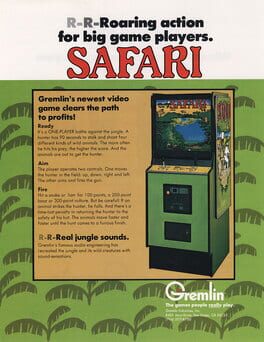
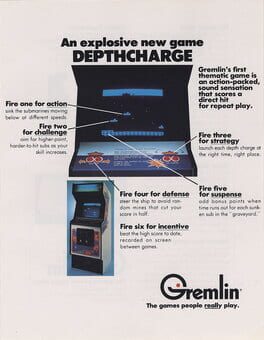
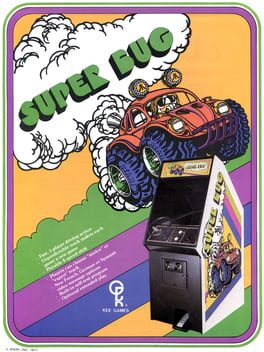
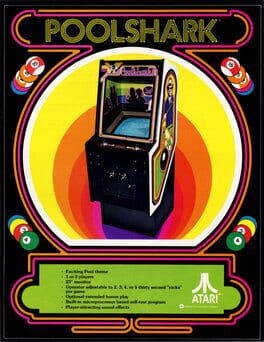
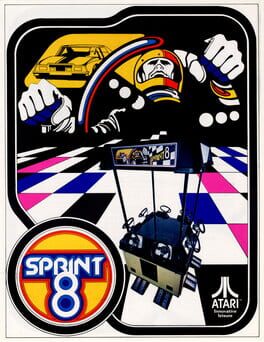
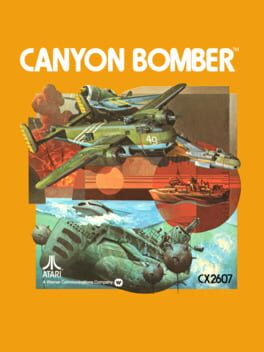
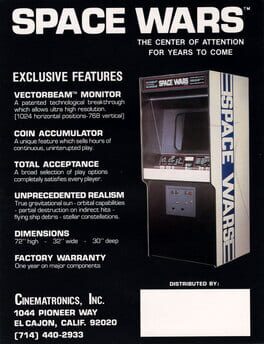
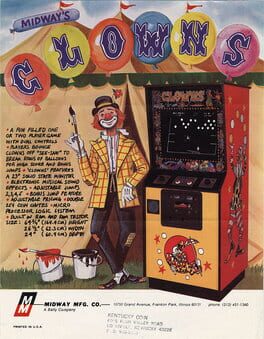

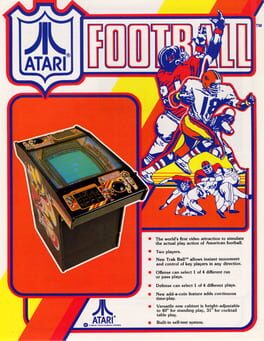
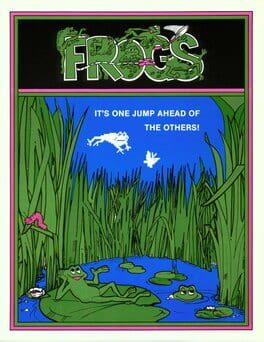
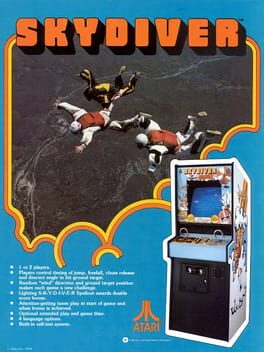


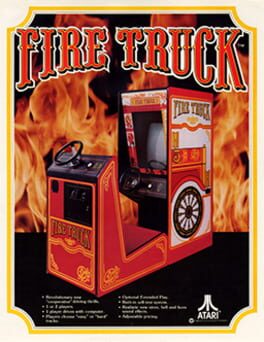
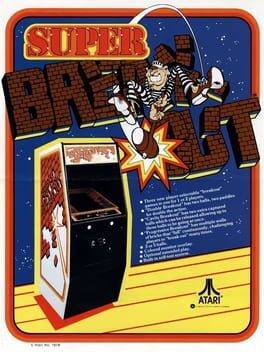
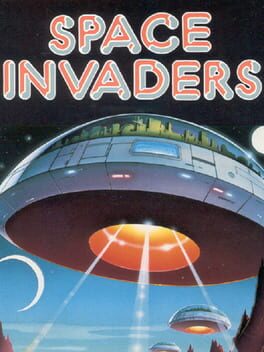
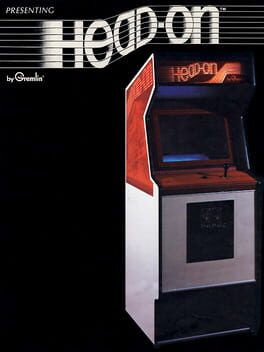
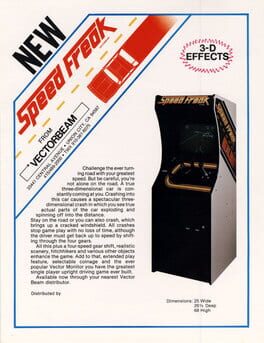
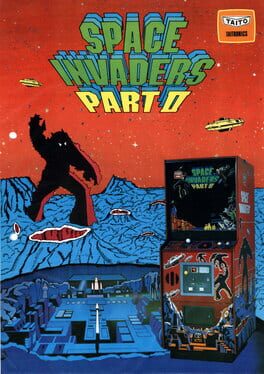
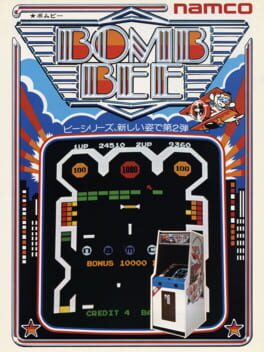

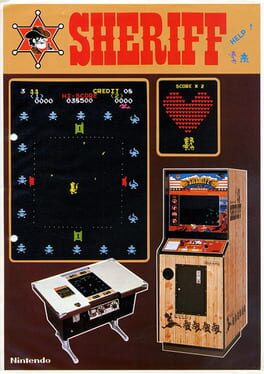
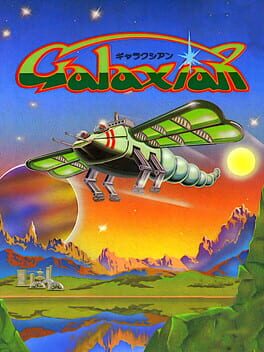
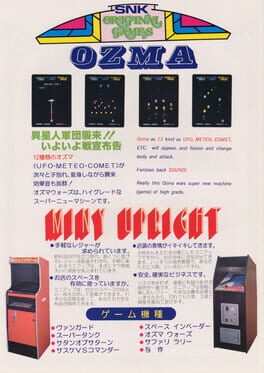
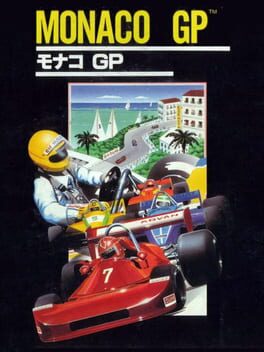
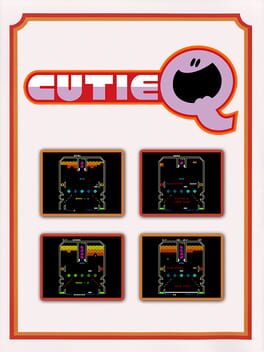
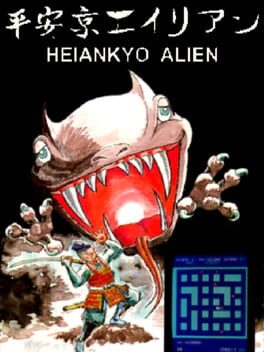
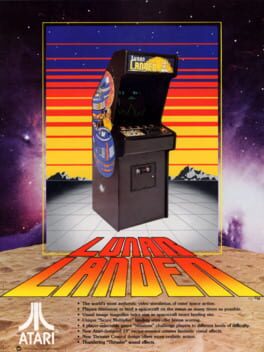
lpslucasps
1 year ago